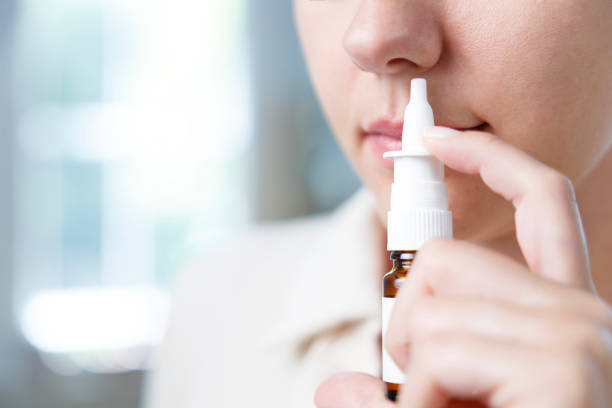USP Aerodynamic Particle Size Distribution Testing
The USP APSD testing is a critical procedure employed in the pharmaceutical industry to ensure that inhalation and nasal products meet stringent standards for patient safety and efficacy. This service involves measuring the size distribution of particles within aerosols or suspensions, which are delivered via devices such as nebulizers, metered-dose inhalers (MDIs), or sprays. The USP APSD test is particularly important for ensuring that drugs can be effectively and safely administered to patients.
The primary purpose of this testing is to evaluate the particle size distribution within formulations, which directly impacts drug delivery efficiency and patient safety. By understanding how particles behave in the respiratory tract or nasal passages, manufacturers can optimize formulation design to enhance drug absorption and minimize side effects. This service plays a crucial role in ensuring compliance with regulatory guidelines, particularly those outlined in USP General Chapter 712: Aerosol Systems for Delivery of Pharmaceutical Products.
The USP APSD testing process typically involves several steps, including the preparation of test samples, particle collection, and subsequent analysis using specialized instrumentation. During sample preparation, it is essential to ensure that the formulation remains stable and representative of the final product. After collecting particles, they are analyzed using APS technology, which measures particle size based on their aerodynamic behavior in air.
The USP APSD testing is not just a regulatory requirement; it also serves as an essential tool for optimizing drug delivery systems. By providing detailed information about the particle size distribution, this service allows manufacturers to make informed decisions regarding formulation design and manufacturing processes. This can lead to improved product performance, enhanced patient compliance, and reduced adverse effects.
The USP APSD testing is particularly important for inhalation products due to the narrow respiratory tract and the need for precise drug delivery. For nasal formulations, it ensures that particles are sufficiently small to penetrate the nasal mucosa effectively. This testing helps manufacturers meet regulatory requirements while also ensuring that their products perform as intended in real-world conditions.
In summary, USP APSD testing is a vital service for ensuring that inhalation and nasal products are safe, effective, and compliant with regulatory standards. By providing detailed particle size distribution data, this service helps manufacturers optimize their formulations and ensure that their products meet the highest quality standards.
Why It Matters
The USP APSD testing is essential for ensuring that inhalation and nasal products are safe, effective, and compliant with regulatory standards. This service plays a crucial role in optimizing drug delivery systems by providing detailed particle size distribution data.
- Enhanced Patient Safety: By understanding how particles behave in the respiratory tract or nasal passages, manufacturers can minimize adverse effects and ensure that drugs are delivered safely to patients.
- Improved Drug Delivery Efficiency: Particle size distribution data helps manufacturers optimize their formulations to enhance drug absorption and efficacy.
- Regulatory Compliance: This service ensures compliance with regulatory guidelines, particularly those outlined in USP General Chapter 712: Aerosol Systems for Delivery of Pharmaceutical Products.
- Patient Compliance: By ensuring that products perform as intended, this service enhances patient compliance and satisfaction.
- Reduced Adverse Effects: Particle size distribution data helps manufacturers identify and minimize adverse effects associated with drug delivery.
- Optimized Formulation Design: This service provides detailed information about particle behavior in real-world conditions, allowing manufacturers to make informed decisions regarding formulation design and manufacturing processes.
In summary, USP APSD testing is a vital service for ensuring that inhalation and nasal products are safe, effective, and compliant with regulatory standards. By providing detailed particle size distribution data, this service helps manufacturers optimize their formulations and ensure that their products meet the highest quality standards.
Eurolab Advantages
At Eurolab, we pride ourselves on offering comprehensive APSD testing services tailored to the unique needs of the pharmaceutical industry. Our team of experts is dedicated to providing accurate and reliable results that meet or exceed regulatory requirements.
- Experienced Professionals: Our team consists of highly skilled scientists and engineers with extensive experience in APSD testing.
- State-of-the-Art Equipment: We utilize the latest instrumentation to ensure precise and accurate particle size distribution measurements.
- Comprehensive Reporting: Our reports provide detailed insights into particle behavior, helping manufacturers make informed decisions regarding formulation design and manufacturing processes.
- Regulatory Compliance: Eurolab ensures that all testing procedures comply with the latest regulatory guidelines, particularly those outlined in USP.
- Dedicated Customer Support: Our team is available to provide guidance and support throughout the testing process.
- Accurate Results: We offer accurate and reliable results that can be trusted for regulatory submissions and internal decision-making.
- Fast Turnaround Times: Eurolab prioritizes timely delivery of test results, ensuring that manufacturers can make informed decisions promptly.
In summary, Eurolab offers comprehensive APSD testing services tailored to the unique needs of the pharmaceutical industry. Our team of experienced professionals, state-of-the-art equipment, and commitment to regulatory compliance ensure that manufacturers receive accurate and reliable results.
Frequently Asked Questions
- Ensuring that inhalation and nasal products meet regulatory requirements.
- Optimizing drug delivery systems by providing detailed particle size distribution data.
- Minimizing adverse effects associated with drug delivery.
- Enhancing patient safety and compliance.





